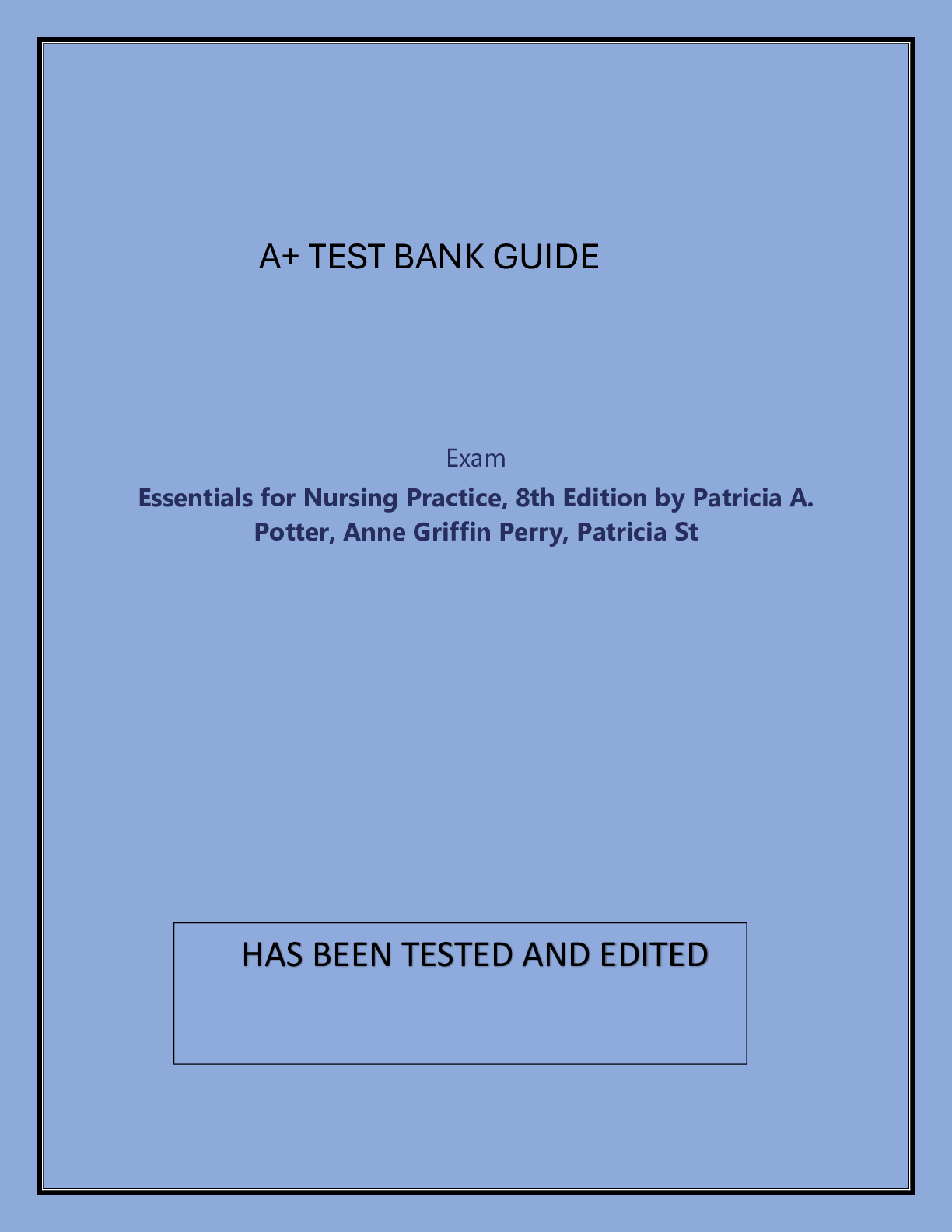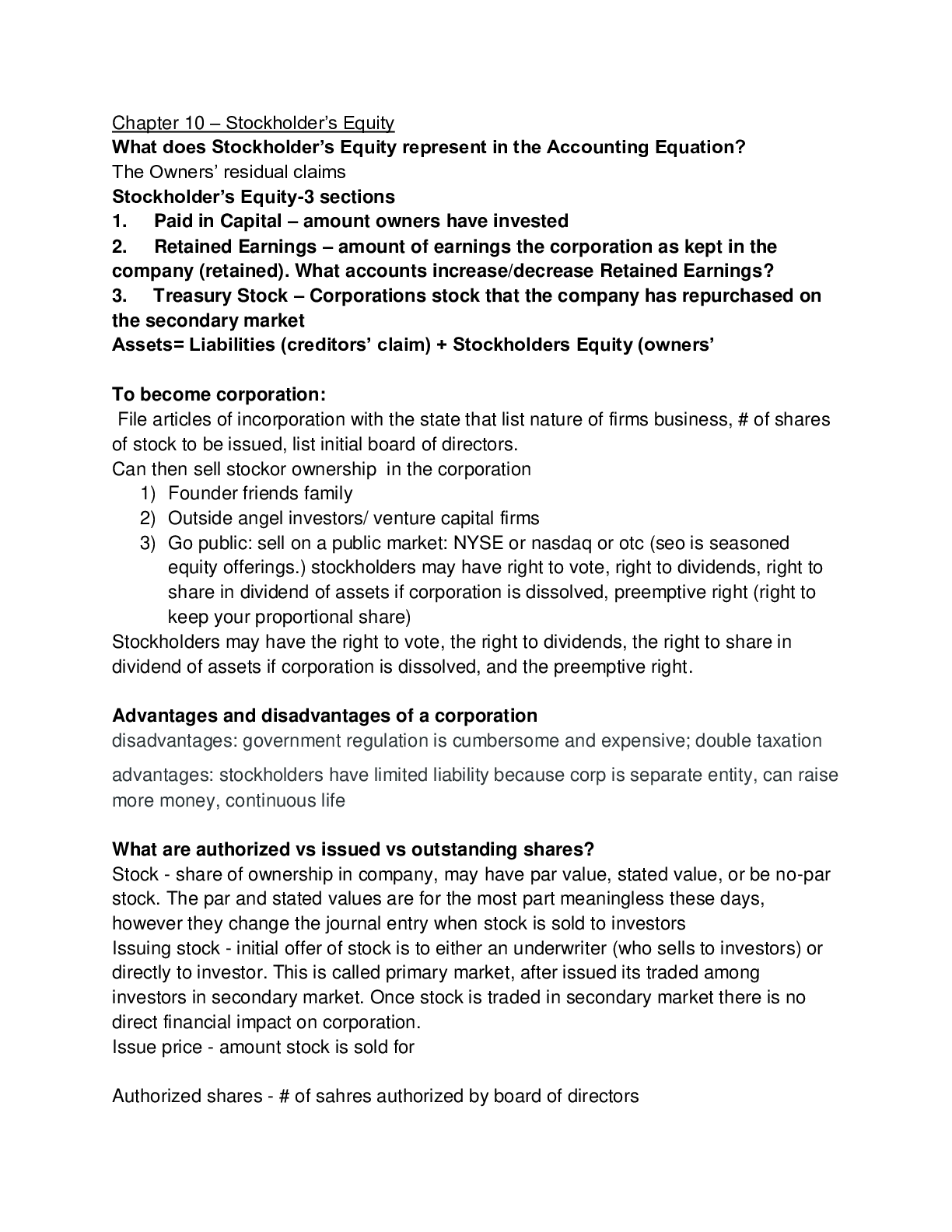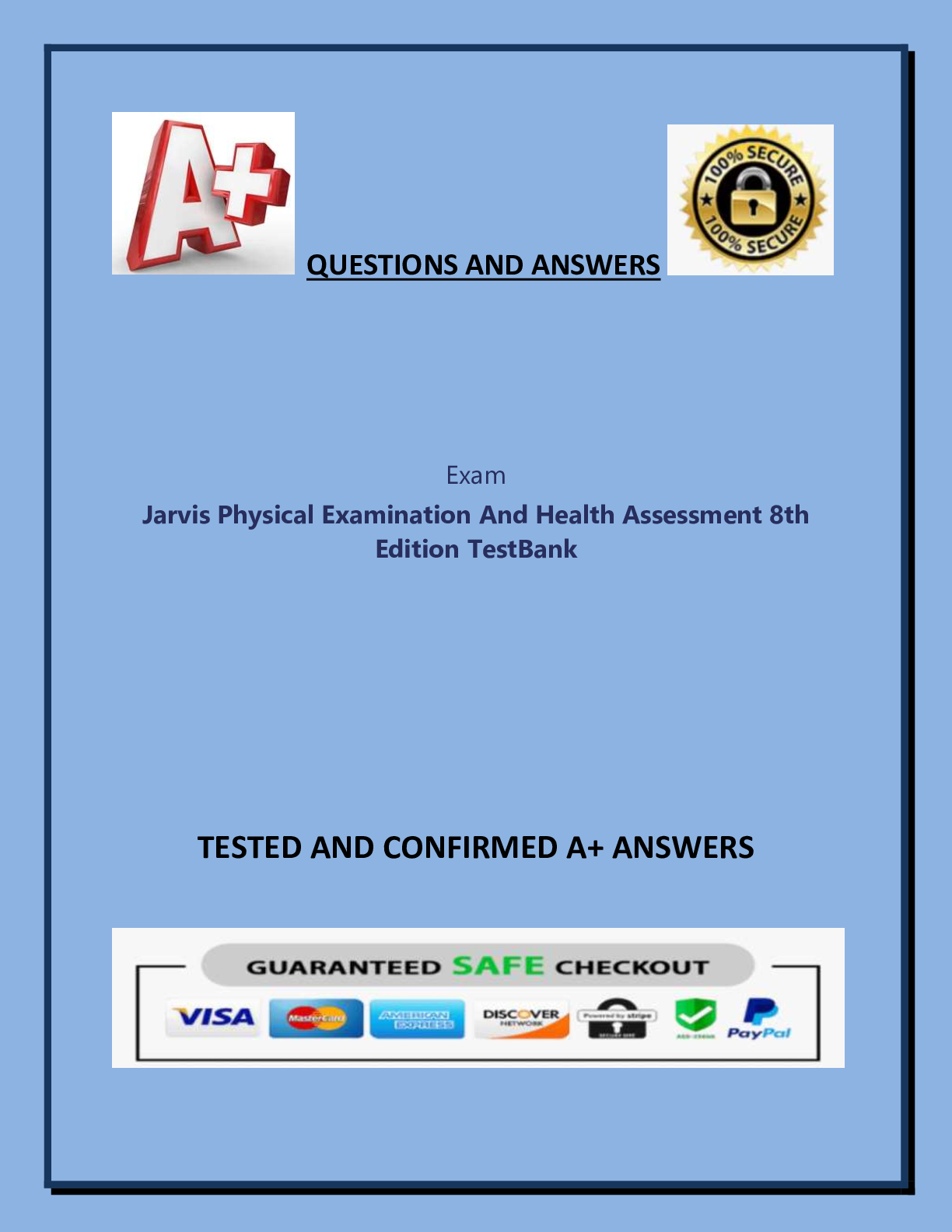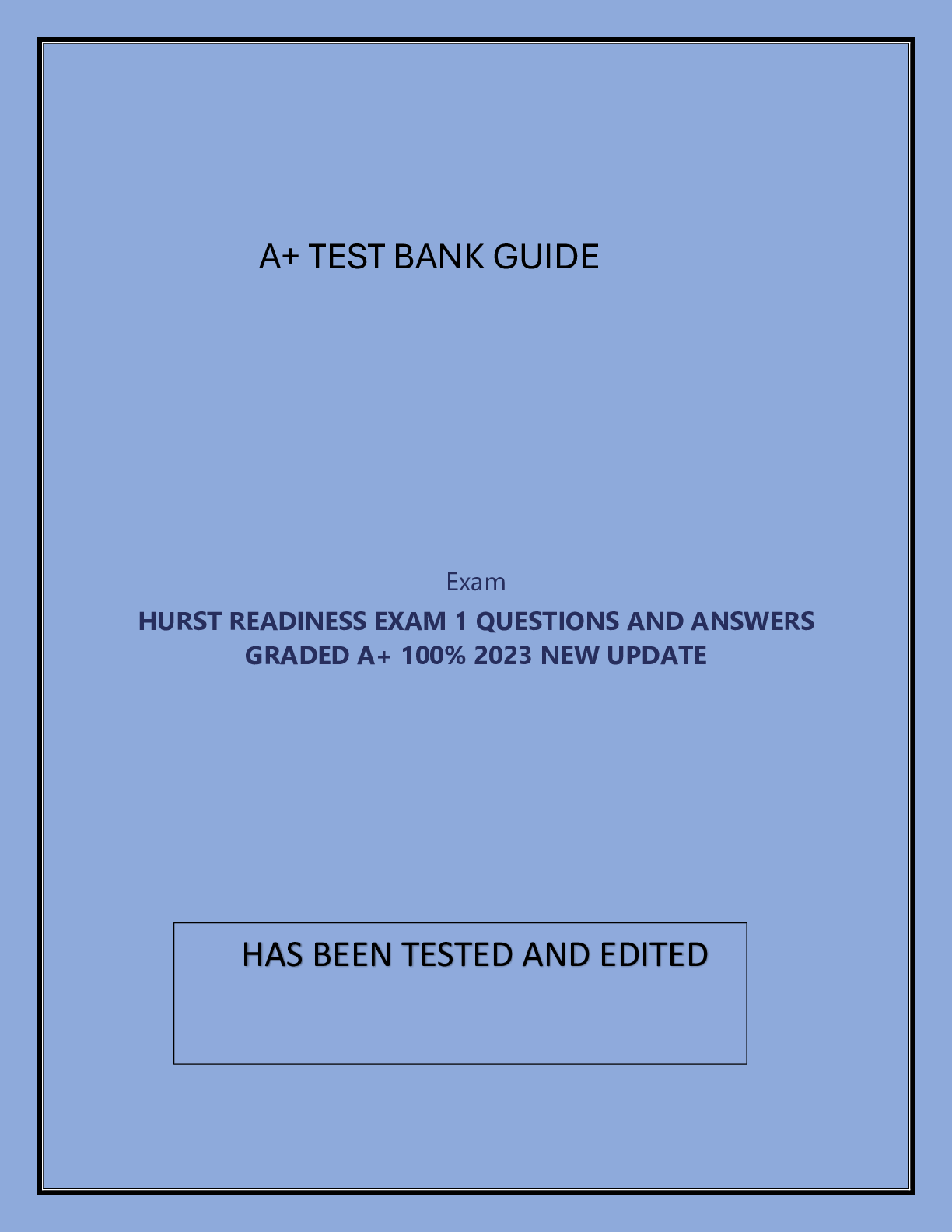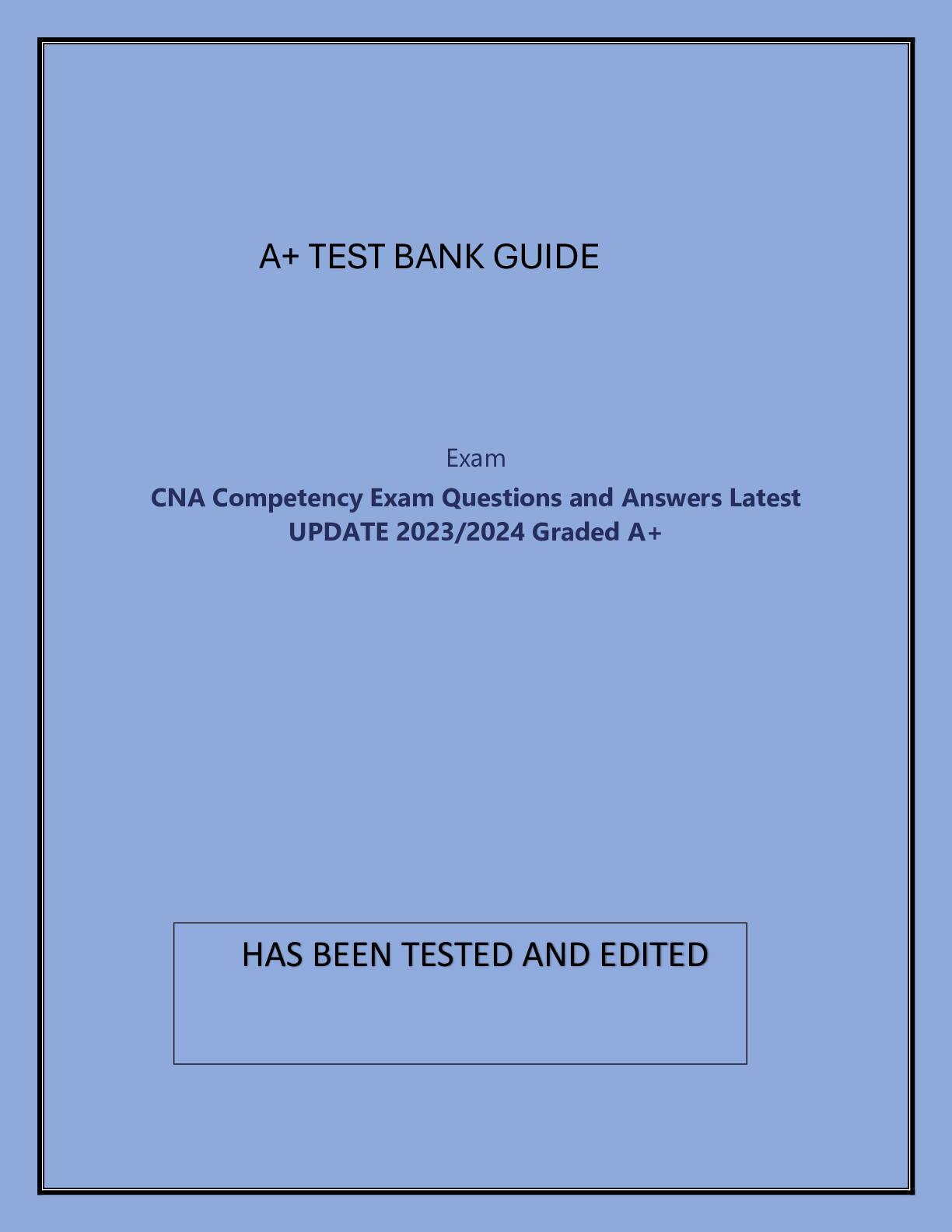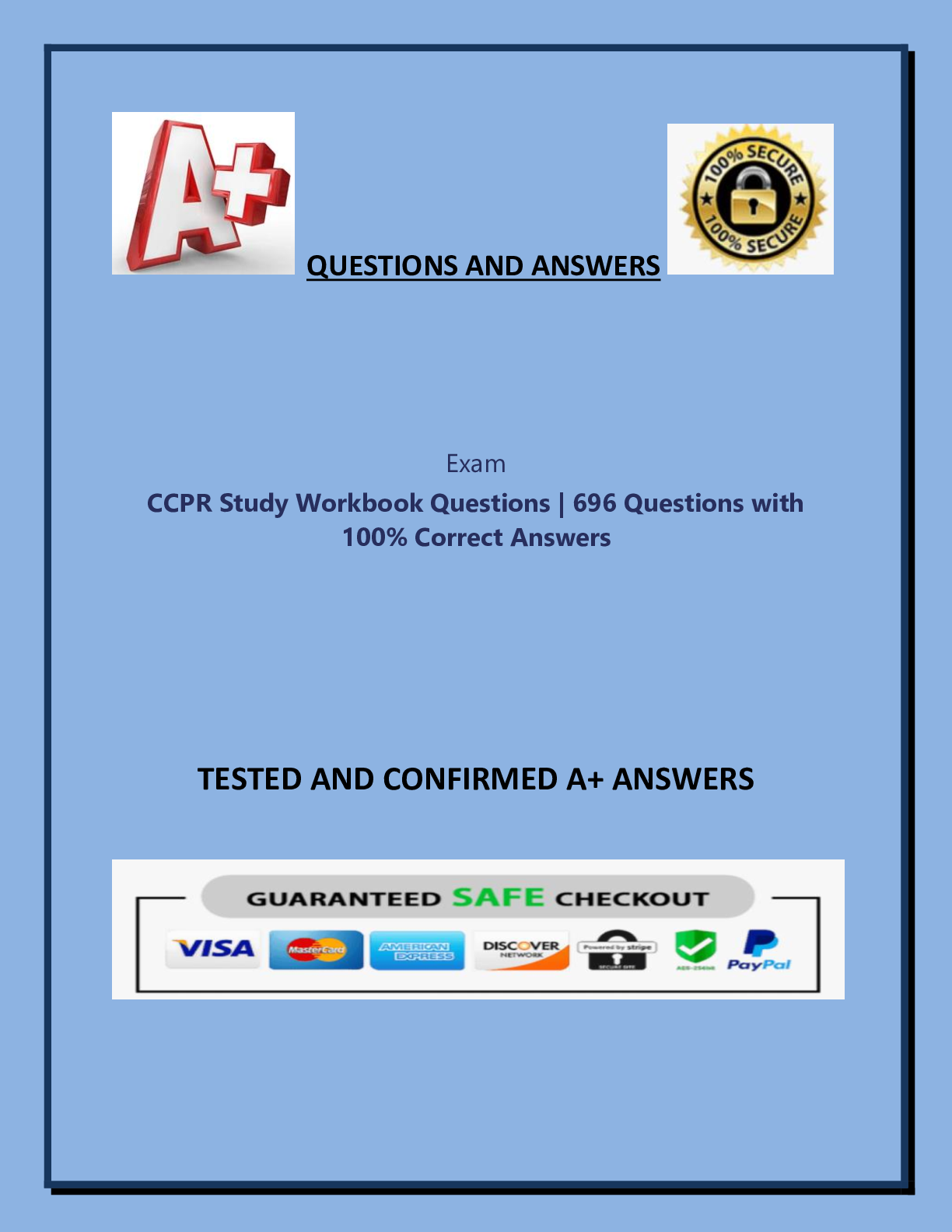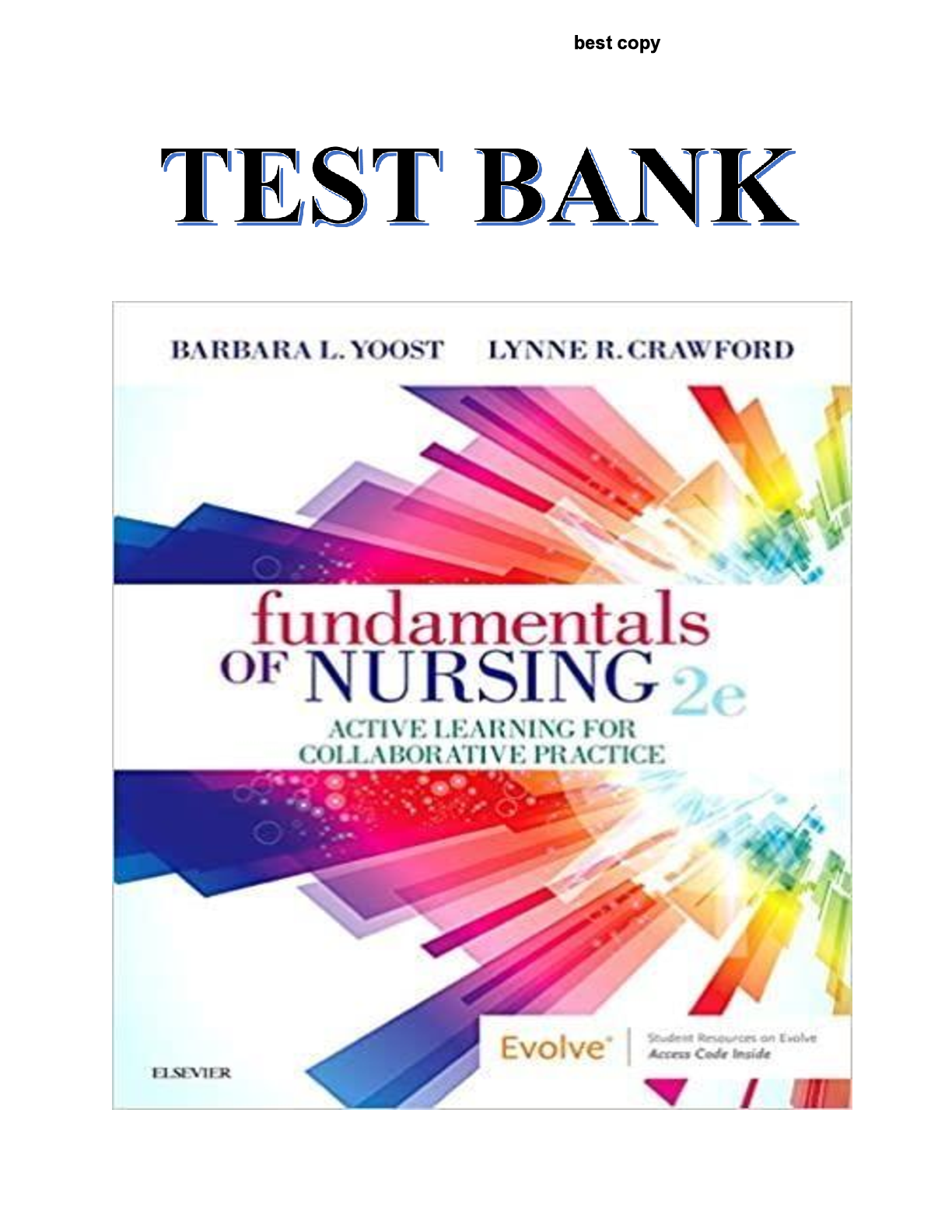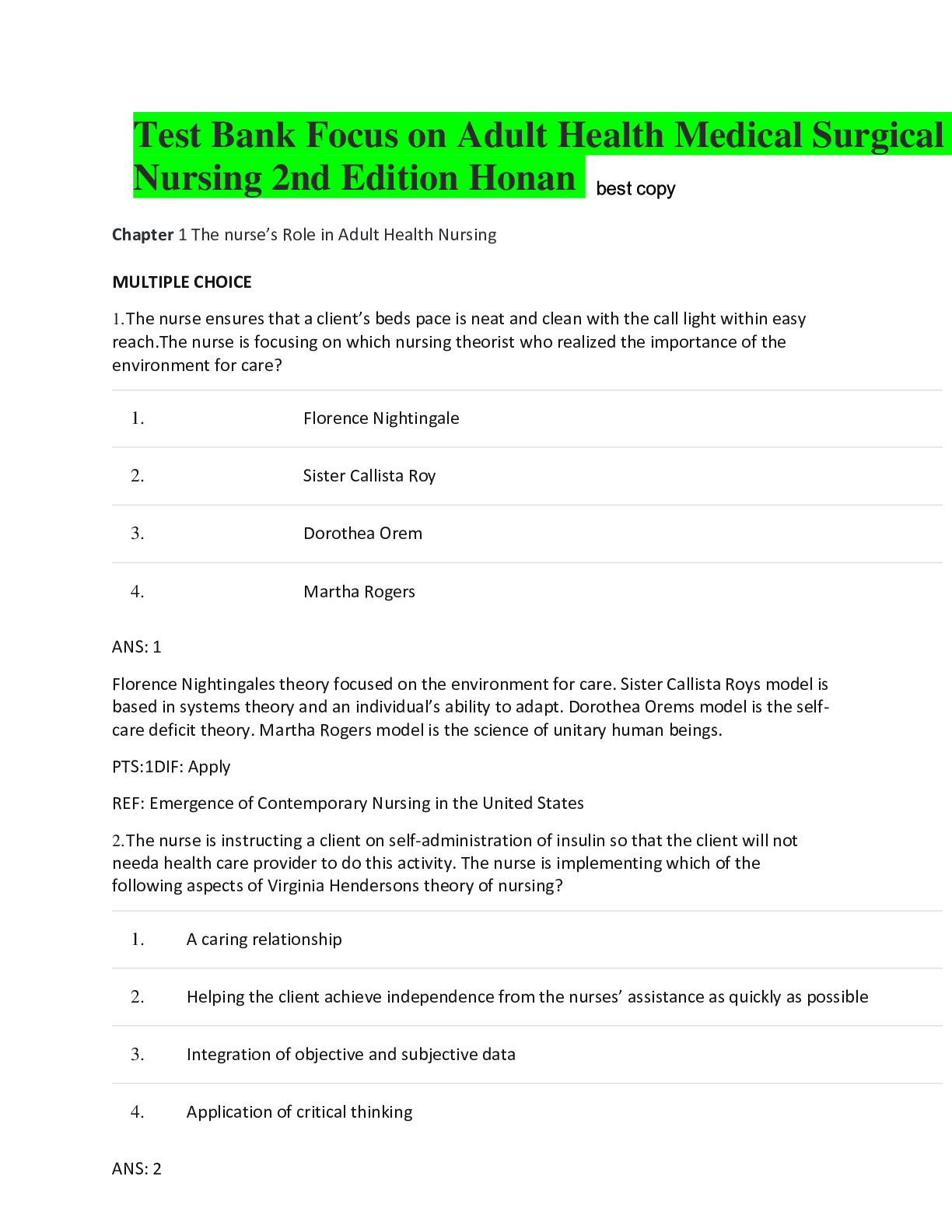*NURSING > A-Level Question Paper > Fundamentals OF Nursing 2ND Edition Barbara L Yoost Lynne R Crawford (All)
Fundamentals OF Nursing 2ND Edition Barbara L Yoost Lynne R Crawford
Document Content and Description Below
MULTIPLE CHOICE 1. A group of nursing students are discussing the impact of nonnursing theories in clinical practice. The students would be correct if they chose which theory to prioritize patient c... are? a. Erikson’s Psychosocial Theory b. Paul’s Critical-Thinking Theory c. Maslow’s Hierarchy of Needs d. Rosenstock’s Health Belief Model ANS: C Maslow’s hierarchy of needs specifies the psychological and physiologic factors that affect each person’s physical and mental health. The nurse’s understanding of these factors helps with formulating Nursing diagnoses that address the patient’s needs and values to prioritize care. Erikson’s Psychosocial Theory of Development and Socialization is based on individuals’ interacting and learning about their world. Nurses use concepts of developmental theory to critically think in providing care for their patients at various stages of their lives. Rosenstock (1974) developed the psychological Health Belief Model. The model addresses possible reasons for why a patient may not comply with recommended health promotion behaviors. This model is especially useful to nurses as they educate patients. DIF: Remembering OBJ: 1.5 TOP: Planning MSC: NCLEX Client Needs Category: Safe and Effective Care Environment: Management of Care NOT: Concepts: Care Coordination 2. A nursing student is preparing study notes from a recent lecture in nursing history. The student would credit Florence Nightingale for which definition of nursing? a. The imbalance between the patient and the environment decreases the capacity for health. b. The nurse needs to focus on interpersonal processes between nurse and patient. c. The nurse assists the patient with essential functions toward independence. d. Human beings are interacting in continuous motion as energy fields. ANS: A Florence Nightingale’s (1860) concept of the environment emphasized prevention and clean air, water, and housing. This theory states that the imbalance between the patient and the environment decreases the capacity for health and does not allow for conservation of energy. Hildegard Peplau (1952) focused on the roles played by the nurse and the interpersonal process between a nurse and a patient. Virginia Henderson described the nurse’s role as substitutive (doing for the person), supplementary (helping the person), or complementary (working with the person), with the goal of independence for the patient. Martha Rogers (1970) developed the Science of Unitary Human Beings. She stated that human beings and lOMoARcPSD|319 010 54 their environments are interacting in continuous motion as infinite energy fields. DIF: Understanding OBJ: 1.4 TOP: Planning MSC: NCLEX Client Needs Category: Health Promotion and Maintenance NOT: Concepts: Health Promotion [Show More]
Last updated: 1 year ago
Preview 1 out of 14 pages
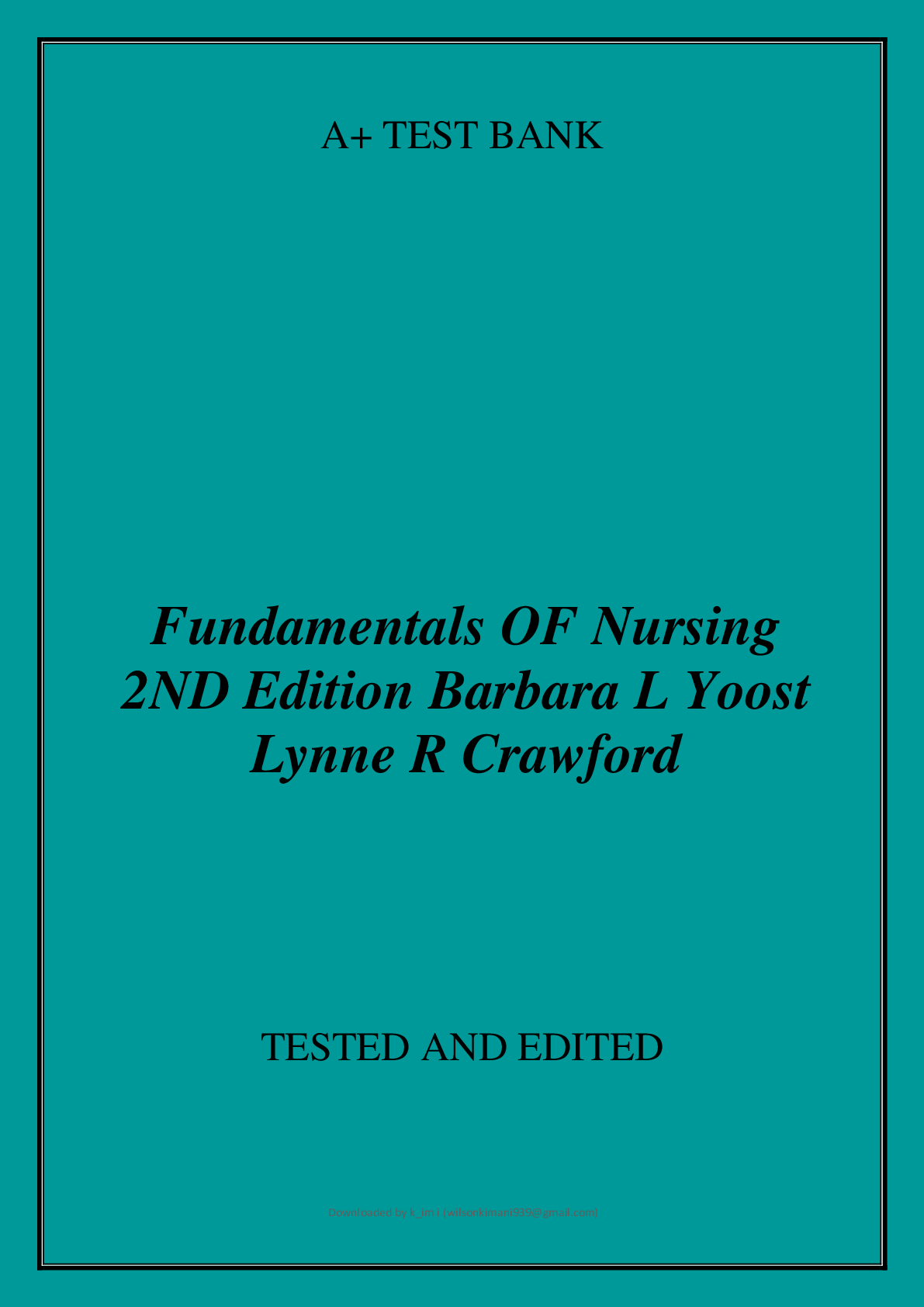
Buy this document to get the full access instantly
Instant Download Access after purchase
Buy NowInstant download
We Accept:

Reviews( 0 )
$18.50
Can't find what you want? Try our AI powered Search
Document information
Connected school, study & course
About the document
Uploaded On
Oct 28, 2023
Number of pages
14
Written in
Additional information
This document has been written for:
Uploaded
Oct 28, 2023
Downloads
0
Views
62

